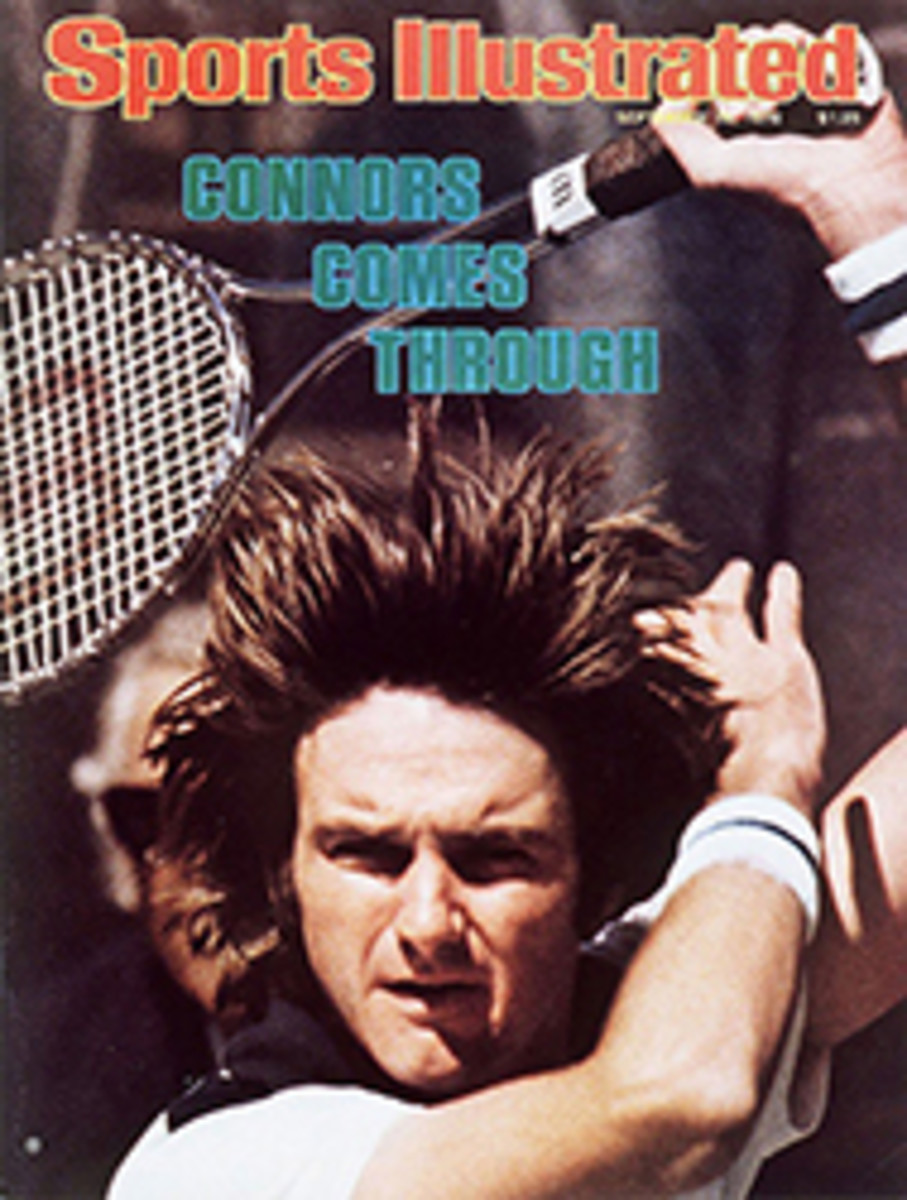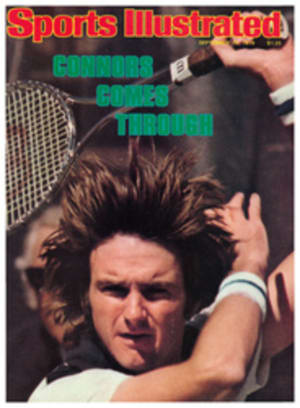
Fair start on a foul day
There is a belief in the Pacific Northwest that football players from Los Angeles like water only in their hot tubs or under their surfboards. They'll take a smog alert or a mild earthquake over rain any day. They prefer a fast track.
So it was that UCLA Coach Terry Donahue, dismayed at having to open the season in Seattle against defending Rose Bowl champion Washington, could console himself with the fact that early September weather in Washington is usually balmy. Ha! Donahue had forgotten that a UCLA arrival in the Queen City has the same result as cloud seeding. It poured last Saturday, thoroughly soaking the new AstroTurf carpet at Husky Stadium and making every fall a splashdown.
Nevertheless, the Bruins, led by sophomore Defensive Back Kenny Easley and Peter Boermeester, a fine punter, slipped and sloshed to a 10-7 victory over Washington. It was their third straight defeat of the Huskies and their second in the last three years in the Seattle rain.
Actually, Washington Coach Don James had been hoping for a dry field himself, although he had allowed as how he wouldn't complain if a thunderstorm happened along after the Huskies built a nice lead. "I don't know how anybody could play in that weather," he said afterward, "slipping and throwing that water-soaked ball."
The weather was just one of James' concerns. The other was UCLA's mysterious new offense—which replaced last year's veer. This was rumored to be a mishmash blended with a potpourri. Donahue was purposely vague when questioned about it: "We will run some I-formation sets, we will run some split-back sets, we will run some single-back sets and we will run a few things I'd rather not discuss right now." Mark Purdy, a sportswriter on the Bruin beat for the Los Angeles Times called the offense "an amorphous piece of business which is being variously described as the 'multiple veer,' the 'smorgasbord,' the 'multiple I,' the 'multiple set' or the just plain 'multiple.' "
Well, apparently the only thing multiplied was baloney, because in the downpour at Washington, UCLA almost exclusively used the I. That is a formation that seems ideally suited to the Bruins' personnel, and in particular to junior Quarterback Rick Bashore. Unlike his immediate predecessors, John Sciarra and Jeff Dankworth, he does not run well enough to be a topflight veer quarterback, but he does have a strong arm, one made stronger by intensive weight training in the off-season.
From left halfback in the veer to tailback in the I went James Owens, a world-class high hurdler (he was sixth in the Montreal Games and was the 1977 NCAA and AAU champion) who gained 938 yards last season, best on the team. But Owens spent the past spring in spikes instead of cleats while Donahue and his staff began installing the I. Owens had to be kept up to date by his roommate and best friend, Theotis Brown, a senior halfback turned fullback. A 220-pounder who ran a 9.6 100 in high school and gained more than 1,000 yards for the Bruins in 1976, Brown was hurt much of last season.
"I won't be doing much blocking this year," said Owens before the game. "I'll be doing more running and going out on pass patterns. But Theotis, he's definitely doing more blocking. It'll be an adjustment for him. He's used to carrying the ball."
The UCLA coaching staff did a good selling job on Brown, convincing him that the pro scouts already knew he could run, now he could show them he could block. Also, that there is no NCAA rule forbidding I-formation fullbacks from handling the football once in a while, or even scoring a touchdown.
"I wouldn't trade our running backs for any in the country," said Donahue.
Washington's backfield was also somewhat unsettled. James had a difficult time picking a starting quarterback to replace Warren Moon, who is now with the Edmonton Eskimos of the CFL. The man who won the job was Tom Porras, a transfer from Ventura (Calif.) Junior College. In days gone by, the Huskies had eased into the season with pushover openers against the Puyallup Indians (1898), Lincoln High School (1911) or the crew of the U.S.S. Mississippi (1923). No doubt James would have liked to break in Porras against, say, the Bellevue Beauty School. But, no, it was UCLA—in a game that might eventually determine the Pac-10 title.
To ease some of the pressure, James put Porras off limits to reporters the week of the game. Acting as spokesman for his team, James told a booster-club luncheon Friday, "The Husky players are going to go out and fight and scratch and bust their fannies, and what more can you ask?"
Well, sunshine for one thing. The weather was so rotten that neither Porras nor anyone else had much chance to show what he could do. Defense took over. And the special teams.
Donahue had been prophetic earlier in the week when he said, "One of the strongest points of the Washington program is their kicking game. I think one of the keys in the ball game will be how sound our kicking game is in relation to Washington's."
It was sound enough. The Bruins got off to a 3-0 lead in the first quarter, recovering a fumble on their 45 and slipping and sliding to the Husky 20 before bogging down. With fourth and 10 at the 20, Peter Boermeester kicked a 37-yard field goal. So much for UCLA's offensive point production.
A few minutes into the second quarter, Bruin Matt McFarland, who averaged 40 yards on seven soggy punts, kicked to Washington's Nesby Glasgow, who dropped the ball (one of his three fumbles) and fell on it at the Husky 15. In three plays Washington lost seven yards, and Aaron Wilson prepared to punt from his end zone. Easley, however, came racing in from the left side of the Bruin line and blocked the kick. The loose ball was flopped on by Strong Safety Brian Baggott for a TD. Boermeester made it UCLA 10, Washington 0.
"We figured that Washington would pressure our special teams," said Easley, "and we planned to do likewise with them. We had a block-punt play on. It's designed so that everybody on the inside gets blocked and I start way outside and get through. I took a running jump from about four yards away and I really figured that I'd missed the ball. When it hit my left hand it was a surprise to me."
Washington's only score came just before halftime. Owens and Bashore fumbled a handoff and Bruce Harrell recovered for the Huskies on the Bruin 31. Four plays later Porras passed to Tight End Scott Greenwood in the end zone, and Mike Lansford's PAT brought the Huskies to 10-7.
The second half was simply a matter of treading water as both teams had trouble slogging to midfield. But Washington's Rose Bowl hopes weren't completely doused. The Huskies got off to a miserable start last year (2-2 including a victory by forfeit) and came back to win the Pac-8 title. "They're not out of it and we certainly haven't clinched it," said Donahue.
As the spectators waded out of Husky Stadium it was still raining. The waterlogged but happy visitors from California wouldn't have been surprised to see, on the blacktopped path leading down to the nearby marina, a line of animals marching two by two.
UCLA might have been unspectacular but the Bruins, ranked 12th in the AP's preseason poll, at least had rain as an excuse. Seven of the eight nationally ranked teams that played and won last week were also unimpressive, and most of them have only themselves to blame. Then there was Notre Dame, which was not only unimpressive but also upset, 3-0, by Missouri.
The Irish downfall came largely as a result of blowing three scoring opportunities, and eschewing the field goal in two of them. In the third quarter Quarterback Joe Montana tried a sneak on fourth-and-one at the Missouri 11 but was stopped. Three minutes later, third-and-goal from the one. Montana again was stopped for no gain. Then Chris Garlich and Kurt Petersen threw Vegas Ferguson for a loss on his fourth-down blast.
The game was still scoreless late in the third quarter when Notre Dame marched from the Missouri 36 to the three, but a penalty brought the ball back to the 18, from where Notre Dame finally attempted a field goal. It was botched when Joe Restic mishandled the snap. Missouri then marched to the Irish 16, where Jeff Brockhaus booted a 33-yard field goal. "I can only criticize myself," said Irish Coach Dan Devine. "Field goals win games, the idea is to win, and we were in range several times."
Oklahoma Coach Barry Switzer was also questioning his strategy. With 41 seconds left, the fourth-ranked Sooners led Stanford 35-20 and had the ball on their own 12. Oklahoma took an intentional safety in order to get a free kick, making it 35-22, but three plays later Stanford's Steve Dils hit Ken Margerum on an 11-yard pass for a Stanford touchdown, and the successful kick cut the score to 35-29. Then the Cardinals recovered an onside kick at Oklahoma's 11 and on the next play Dils threw into the end zone again. It took Darrol Ray's interception with no time left to save the Sooners' day.
Another perplexed coach was Penn State's Joe Paterno. "I'm not sure what the problem is, but we've got to get better or stop talking," he grumbled as the No. 3-ranked Nittany Lions looked lackluster in a 26-10 win over Rutgers. The Lions were particularly unimpressive in the first half, gaining only 32 yards rushing in 22 attempts. Quarterback Chuck Fusina, who completed 13 of 23 passes for 191 yards, finally mounted an 11-play, 82-yard touchdown march in the fourth quarter. "They will be a tremendous team," gushed Rutgers Coach Frank Burns. With Ohio State coming up this week, they had better be. "If I were scouting for Ohio State, I'd tell Woody Hayes not to worry," Paterno said.
Ninth-ranked USC was so lackadaisical that it was booed at home for the first time in memory before defeating Texas Tech 17-9. To hear Tailback Charles White tell it, the catcalls were uncalled for. "Our game plan was to wear them down," he said. White had 136 yards in 30 carries and the game plan went fine in the third quarter when USC gained 156 yards to Tech's one.
Iowa State, ranked 20th, pulled out all the stops—which is to say it fed Dexter Green the ball often—to stave off upset-minded Rice 23-19. Green, who had 165 yards rushing, scored on runs of nine yards, 13 and one, two of the TDs coming in the last quarter. "When we didn't stop ourselves, they stopped us," said Cyclone Coach Earle Bruce.
Another unimpressed coach was Nebraska's Tom Osborne. The 10th-ranked Cornhuskers showed what they can do by scoring three TDs in a three-minute stretch of the third quarter. Nevertheless, their 36-26 win-over California left Osborne cold. "At times, we played like a grammar-school team," he groaned.
Sixteenth-ranked Texas A&M broke a 10-10 deadlock against lightly regarded Kansas late in the third quarter as Curtis Dickey capped a nine-play, 65-yard drive by bulling over from the one. From there, the Aggies cruised home 37-10.
Only 18th-ranked Florida State had an easy day. The Seminoles, led by Quarterback Jimmy Jordan's 16 completions for 209 yards and a touchdown, out-gained Syracuse 587 yards to 148 in a 28-0 defeat of the Orangemen.
PHOTO
After Boermeester kicked a field goal, Coach Donahue proved he wasn't just a fair-weather friend.

